–
Room P3.10, Mathematics Building
Surface orbifolds and deformations of hypersurfaces with big cotangent bundle
Projecto FCT UIDB/04459/2020.
Surface orbifolds and deformations of hypersurfaces with big cotangent bundle
Projecto FCT UIDB/04459/2020.

Stokes Phenomenon and Dynamics on Wild Character Varieties of Painlevé Equations I
Painlevé equations were discovered at the beginning of XX-th century by Paul Painlevé for purely mathematical reasons. Their solutions, the Painlevé transcendents, are, in general, "new transcendental functions" and, as the classical special functions, they appear in many problems of mathematics and physics. Applications "exploded" at the end of XX-th century: Einstein metrics, Frobenius manifolds, correlation function of the $2$-dimensional Ising model, reduction of integrable PDEs, reduction of self-dual Yang-Mills equations, random matrix theory, $2$-dimensional CFT (conformal blocks), non perturbative effects in strings theory ($2$d quantum gravity)...
First Lecture
Firstly, we will recall basics about Painlevé equations. Each Painlevé vector field initially defined on a trivial bundle of fibre $C^2$ (the naive phase space) can be extended to a fiber bundle (the Okamoto bundle) whose fiber is the Okamoto space of initial conditions: an affine rational surface endowed with a canonical symplectic structure. On this extension the Painlevé vector field is complete.
We will detail the "simplest case": Painlevé VI. The basis of the Okamoto bundle is $C\setminus \{0,1\}$ and we have a non-linear monodromy (with two generators) which induces a dynamics on each Okamoto space.
Painlevé VI can be interpreted as a traduction of the isomonodromic deformations of some linear second order equations (the linearized equations). The space of monodromy data of the linearized equations is an affine cubic surface: the character variety of Painlevé VI. It is endowed with a canonical symplectic structure.
For generic values of the parameters the character variety is non-singular and there exists an analytic (symplectic) diffeomorphism, the Riemann-Hilbert map (RH) between each Okamoto variety and the character variety. The dynamics on the Okamoto variety (non linear monodromy) is conjugated by RH to a dynamics on the character variety. An essential result is that this last dynamics is algebraic and can be explicitely calculated. As a consequence it is possible to prove that (generically) the dynamics of PVI is "rich" (chaotic...) and that the Galois-Malgrange differential groupoid is "as big as possible" (in particular PVI is not integrable!).
The main purpose of the minicourse is to describe a generalization of this picture to the others Painlevé equations (it is a work in progress...).
For PVI the linearized equation is Fuchsian. The character variety is the set of (classical) monodromy representations up to equivalence.
In the other cases the linearized equation has (as the Painlevé equation itself) irregular singularities.
There are Stokes phenomena and it is necessary to "add" in some sense these phenomena to the classical monodromy data. The corresponding character variety is the set of the extended (wild) monodromy data up to equivalence. It is also a cubic surface.
The non-linear monodromy remains but it is a "poor information". The induced dynamics on the Okamoto variety is "too small". Some years ago (2012), I proposed to define a "better dynamics", the wild dynamics. The idea is to generalize the wild dynamics I defined before in the linear case: this dynamics is generated by the classical dynamics, the Stokes phenomena and some continuous tori actions (exponential tori actions).
In the Painlevé case the definition of the non-linear Stokes phenomena and of the exponential tori actions are far to be trivial... In 2012 they were conjectural.The rigorous approach is due to A. Bittmann and quite recent: 2016.
The wild dynamics induces, via RH, a (symplectic) dynamics on the character variety. This dynamics is a priori local. I conjectured that it is in fact rational (2012).
In the second part of the first lecture I will detail the case of PII. I will give a simple and totally explicit description (partly conjectural...) of the wild dynamics on the character variety. An essential point is that it is rational.
The $9$ lines on the character variety of PII play an essential role in the wild dynamics and they are related to some special solutions (Boutroux truncated, tritrucated, bitruncated solutions). There are also related to the resurgence (in Ecalle spirit) of PII. An heuristic principle follows: the lines on the character varieties (affine cubic surfaces) play a central role in the theory of Painlevé equations.
Funded under FCT projects UIDB/MAT/04459/2020 and PTDC/MAT-PUR/30234/2017.
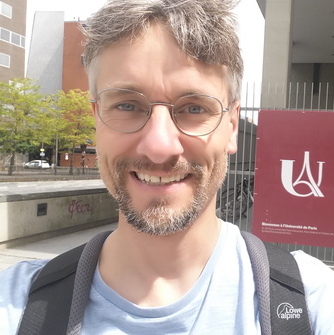
TQFT approach to meromorphic connections I
The moduli space of flat $C^\infty$ connections on rank $n$ vector bundles on a smooth complex algebraic curve $\Sigma$ has an explicit description as the space of representations of the fundamental group: $${\mathcal M}_B = {\rm Hom}(\pi_1(\Sigma),G)/G,\qquad G={\rm GL}_n({\mathbb C})$$ often called the character variety (or Betti moduli space). It has an algebraic Poisson structure with symplectic leaves ${\mathcal M}_B({\bf{\mathcal C}})\subset {\mathcal M}_B$ given by fixing the conjugacy classes of monodromy around each puncture. Choosing suitable generators of $\pi_1(\Sigma)$ this becomes the quotient by $G$ of a space of matrices satisfying a relation of the form $$[A_1,B_1]\cdots[A_g,B_g]M_1\cdots M_m=1$$ where $[a,b]=aba^{-1}b^{-1}$. Thus ${\mathcal M}_B$ “looks like” a multiplicative version of a symplectic (Marsden-Weinstein) quotient, with $G$-valued moment map $\mu$ given by the left-hand side of the relation, so that ${\mathcal M}_B=\mu^{-1}(1)/G$. This “quasi-Hamiltonian” theory was set-up by Alekseev-Malkin-Meinrenken, and leads to the construction of the symplectic manifolds ${\mathcal M}_B({\bf \mathcal C})$ as the multiplicative symplectic quotient of the fusion product of two basic types pieces (conjugacy classes ${\mathcal C}$ and doubles ${\rm \bf D}$).
However this story is just the tip of the iceberg: In algebraic geometry the space ${\mathcal M}_B$ just parametrises the special class of algebraic connections on rank $n$ algebraic vector bundles on $\Sigma$ with tame/regular singular behaviour at the punctures. In this course I’ll first review the topological description of the full category of algebraic connections in terms of Stokes local systems, and the resulting explicit presentations of the wild character varieties (many of which go back to Birkhoff 1913). In turn I’ll describe the extension of the above story, constructing the wild character varieties as algebraic symplectic/Poisson varieties, by fusing together and reducing some new basic pieces (the fission spaces ${\mathcal A}$ and ${\mathcal B}$).
If time permits I'll discuss other topics such as
Some references/sources:
Quasi-Hamiltonian geometry (for compact Lie groups) was defined in:
and the extension of this formalism to complex groups that we use is in:
The wild extension is in the sequence of papers:
An earlier analytic approach to these symplectic manifolds is in P.Boalch, Symplectic Manifolds and Isomonodromic Deformations, Adv. in Math. 163 (2001) 137-205, and the hyperkahler upgrade is in:
A “simple as possible” description of several intrinsic approaches to Stokes data for general linear groups is in
The introduction of this paper aims to give a good guide to the Stokes data literature.
Several explicit descriptions of some of the simplest examples is in arXiv:1501.00930 (Wild Character Varieties, points on the Riemann sphere and Calabi's examples), and reviews of several different directions related to this story are in arXiv:1305.6593, arXiv:1703.10376.
Funded under FCT projects UIDB/MAT/04459/2020 and PTDC/MAT-PUR/30234/2017.

Stokes Phenomenon and Dynamics on Wild Character Varieties of Painlevé Equations II
Second Lecture
The main topic of this lecture is the heuristic principle stated at the end of the first lecture:
the lines on the character varieties (affine cubic surfaces) play a central role in the theory of Painlevé equations.
This principle works very well for PVI. Surprisingly it seems that this remains unnoticed until very recently.
In a first part (mainly in XIX-th algebraic geometry style), we will describe the lines on the cubic surfaces, in particular the 27 lines in the case of nonsingular (complete) cubic surfaces.
In the second part of the lecture I will explain some relations between the 24 lines on the character variety of PVI and some partial reducibility properties of the monodromy representations of the linearized equations.
Afterwards I will sketch a generalization for the other Painlevé equations.
Funded under FCT projects UIDB/MAT/04459/2020 and PTDC/MAT-PUR/30234/2017.

TQFT approach to meromorphic connections II
The moduli space of flat $C^\infty$ connections on rank $n$ vector bundles on a smooth complex algebraic curve $\Sigma$ has an explicit description as the space of representations of the fundamental group: $${\mathcal M}_B = {\rm Hom}(\pi_1(\Sigma),G)/G,\qquad G={\rm GL}_n({\mathbb C})$$ often called the character variety (or Betti moduli space). It has an algebraic Poisson structure with symplectic leaves ${\mathcal M}_B({\bf{\mathcal C}})\subset {\mathcal M}_B$ given by fixing the conjugacy classes of monodromy around each puncture. Choosing suitable generators of $\pi_1(\Sigma)$ this becomes the quotient by $G$ of a space of matrices satisfying a relation of the form $$[A_1,B_1]\cdots[A_g,B_g]M_1\cdots M_m=1$$ where $[a,b]=aba^{-1}b^{-1}$. Thus ${\mathcal M}_B$ “looks like” a multiplicative version of a symplectic (Marsden-Weinstein) quotient, with $G$-valued moment map $\mu$ given by the left-hand side of the relation, so that ${\mathcal M}_B=\mu^{-1}(1)/G$. This “quasi-Hamiltonian” theory was set-up by Alekseev-Malkin-Meinrenken, and leads to the construction of the symplectic manifolds ${\mathcal M}_B({\bf \mathcal C})$ as the multiplicative symplectic quotient of the fusion product of two basic types pieces (conjugacy classes ${\mathcal C}$ and doubles ${\rm \bf D}$).
However this story is just the tip of the iceberg: In algebraic geometry the space ${\mathcal M}_B$ just parametrises the special class of algebraic connections on rank $n$ algebraic vector bundles on $\Sigma$ with tame/regular singular behaviour at the punctures. In this course I’ll first review the topological description of the full category of algebraic connections in terms of Stokes local systems, and the resulting explicit presentations of the wild character varieties (many of which go back to Birkhoff 1913). In turn I’ll describe the extension of the above story, constructing the wild character varieties as algebraic symplectic/Poisson varieties, by fusing together and reducing some new basic pieces (the fission spaces ${\mathcal A}$ and ${\mathcal B}$).
If time permits I'll discuss other topics such as
Some references/sources:
Quasi-Hamiltonian geometry (for compact Lie groups) was defined in:
and the extension of this formalism to complex groups that we use is in:
The wild extension is in the sequence of papers:
An earlier analytic approach to these symplectic manifolds is in P.Boalch, Symplectic Manifolds and Isomonodromic Deformations, Adv. in Math. 163 (2001) 137-205, and the hyperkahler upgrade is in:
A “simple as possible” description of several intrinsic approaches to Stokes data for general linear groups is in
The introduction of this paper aims to give a good guide to the Stokes data literature.
Several explicit descriptions of some of the simplest examples is in arXiv:1501.00930 (Wild Character Varieties, points on the Riemann sphere and Calabi's examples), and reviews of several different directions related to this story are in arXiv:1305.6593, arXiv:1703.10376.
Funded under FCT projects UIDB/MAT/04459/2020 and PTDC/MAT-PUR/30234/2017.
Lifting Lagrangians from symplectic divisors
We prove that there are infinitely many non-symplectomorphic monotone Lagrangian tori in complex projective spaces, quadrics and cubics of complex dimension at least $3$. This is a consequence of the following: if $Y$ is a codimension $2$ symplectic submanifold of a closed symplectic manifold $X$, then we can explicitly relate the superpotential of a monotone Lagrangian $L$ in $Y$ with the superpotential of a monotone Lagrangian lift of $L$ in $X$. This sometimes involves relative Gromov-Witten invariants of the pair $(X,Y)$. We will define the superpotential, which is a count of pseudoholomorphic disks with boundary on a Lagrangian, and which plays an important role in Floer theory and mirror symmetry. This is joint work with D. Tonkonog, R. Vianna and W. Wu.
Projecto FCT UIDB/04459/2020.

Stokes Phenomenon and Dynamics on Wild Character Varieties of Painlevé Equations III
Third Lecture
Firstly I will discuss the problem of the definition of the wild monodromy for an arbitrary irregular singularity in the linear case, in relation with Stokes phenomena, $k$-summability, multisummability, Laplace transform and resurgence. The source of this topic is, a century ago, a R. Garnier paper 1919.
I will detail the basic example: the monodromy and Stokes phenomena in the case of Hypergeometic Equations (classical and confluent). I will explain the confluence of monodromy towards wild monodromy.
In the second part of the lecture I will describe some non-linear Stokes phenomena and the corresponding unfoldings: saddle-nodes, symplectic saddle-nodes.
I will end with the application of all the tools to the case of the confluence of PVI towards PV. As a byproduct, it is possible to get a proof of the rationality of the wild dynamics of PV (M. Klimes). It is extremely technical and I will give only the (simple!) basic ideas and the main lines.
It is a first step towards a proof of the following conjecture (Ramis 2012):
The (wild) dynamics on the (wild) character variety of each Painlevé equation is rational and explicitely computable.
Funded under FCT projects UIDB/MAT/04459/2020 and PTDC/MAT-PUR/30234/2017.

TQFT approach to meromorphic connections III
The moduli space of flat $C^\infty$ connections on rank $n$ vector bundles on a smooth complex algebraic curve $\Sigma$ has an explicit description as the space of representations of the fundamental group: $${\mathcal M}_B = {\rm Hom}(\pi_1(\Sigma),G)/G,\qquad G={\rm GL}_n({\mathbb C})$$ often called the character variety (or Betti moduli space). It has an algebraic Poisson structure with symplectic leaves ${\mathcal M}_B({\bf{\mathcal C}})\subset {\mathcal M}_B$ given by fixing the conjugacy classes of monodromy around each puncture. Choosing suitable generators of $\pi_1(\Sigma)$ this becomes the quotient by $G$ of a space of matrices satisfying a relation of the form $$[A_1,B_1]\cdots[A_g,B_g]M_1\cdots M_m=1$$ where $[a,b]=aba^{-1}b^{-1}$. Thus ${\mathcal M}_B$ “looks like” a multiplicative version of a symplectic (Marsden-Weinstein) quotient, with $G$-valued moment map $\mu$ given by the left-hand side of the relation, so that ${\mathcal M}_B=\mu^{-1}(1)/G$. This “quasi-Hamiltonian” theory was set-up by Alekseev-Malkin-Meinrenken, and leads to the construction of the symplectic manifolds ${\mathcal M}_B({\bf \mathcal C})$ as the multiplicative symplectic quotient of the fusion product of two basic types pieces (conjugacy classes ${\mathcal C}$ and doubles ${\rm \bf D}$).
However this story is just the tip of the iceberg: In algebraic geometry the space ${\mathcal M}_B$ just parametrises the special class of algebraic connections on rank $n$ algebraic vector bundles on $\Sigma$ with tame/regular singular behaviour at the punctures. In this course I’ll first review the topological description of the full category of algebraic connections in terms of Stokes local systems, and the resulting explicit presentations of the wild character varieties (many of which go back to Birkhoff 1913). In turn I’ll describe the extension of the above story, constructing the wild character varieties as algebraic symplectic/Poisson varieties, by fusing together and reducing some new basic pieces (the fission spaces ${\mathcal A}$ and ${\mathcal B}$).
If time permits I'll discuss other topics such as
Some references/sources:
Quasi-Hamiltonian geometry (for compact Lie groups) was defined in:
and the extension of this formalism to complex groups that we use is in:
The wild extension is in the sequence of papers:
An earlier analytic approach to these symplectic manifolds is in P.Boalch, Symplectic Manifolds and Isomonodromic Deformations, Adv. in Math. 163 (2001) 137-205, and the hyperkahler upgrade is in:
A “simple as possible” description of several intrinsic approaches to Stokes data for general linear groups is in
The introduction of this paper aims to give a good guide to the Stokes data literature.
Several explicit descriptions of some of the simplest examples is in arXiv:1501.00930 (Wild Character Varieties, points on the Riemann sphere and Calabi's examples), and reviews of several different directions related to this story are in arXiv:1305.6593, arXiv:1703.10376.
Funded under FCT projects UIDB/MAT/04459/2020 and PTDC/MAT-PUR/30234/2017.
Sharp inequalities relating volume and the min-max widths of Riemannian three-spheres.
Min-max theories for the area functional have undergone ground-break developments in recent years. One aspect of these theories is that they define many notions of "width" that can be understood as geometric invariants of compact Riemannian manifolds. As such, it is an interesting question to understand what sort of geometric information they encode. In this talk, we will focus on the Simon-Smith width of Riemannian three-dimensional spheres, discussing how large it can be among metrics normalised to have the same volume, and necessary conditions for maxima under further restrictions. This is a joint work with Rafael Montezuma (UM-Amherst).
Projecto FCT UIDB/04459/2020.
Finite order period integrals in normal crossing K3 degenerations
I am presenting a new technique to compute period integrals of degenerating Calabi-Yau manifolds. In the K3 case, the formula can be used to study the Picard group of nearby fibres. In general, the technique leads to canonical parametrizations of degenerating families at the boundary of the moduli space. The result enters ongoing work by Gross-Hacking-Keel-Siebert on a modular compactification of the family of g-polarized K3 surfaces. This is joint with Bernd Siebert.
Projecto FCT UIDB/04459/2020.
Special Lagrangians, Lagrangian mean curvature flow and the Gibbons-Hawking ansatz
(all joint work with Jason Lotay) A standing conjecture of Richard Thomas, motivated by mirror symmetry, gives a stability condition supposed to control the existence of a special Lagrangian submanifold in a given Hamiltonian isotopy class of Lagrangians. Later, Thomas and Yau conjectured a similar stability condition controls the long-time existence of the Lagrangian mean-curvature flow. In this talk I will explain how Jason Lotay and myself have recently proved versions of these conjectures on all circle symmetric hyperKahler 4-manifolds.
Projecto FCT UIDB/04459/2020.

Invariance of symplectic cohomology under deformations
This is joint work with Gabriele Benedetti (Heidelberg).
I will describe how Floer cohomology changes as one deforms the symplectic form. I will then explain how these results are useful in applications in symplectic topology, e.g. finding generators for the Fukaya category of toric varieties or finding lower bounds on the number of magnetic geodesics.
Projecto FCT UIDB/04459/2020.

Non-commutative integrable systems and their singularities
The theory of singularities of non-commutative integrable systems (a.k.a isotropic fibrations), in contrast with the well-known theory for the commutative case (a.k.a. Lagrangian fibrations), is nonexistent. In this talk I will describe a few first steps toward such a theory.
Projecto FCT UIDB/04459/2020.

Complete hyperKaehler 4-manifolds with cubic volume growth (and suitable decay of the curvature), also known as ALF gravitational instantons, are known to come in two families, according to the fundamental group at infinity. This group must be a finite subgroup of $SU(2)$ and the only possibilities compatible with cubic volume growth are the cyclic groups ($A_k$) and binary dihedral groups ($D_k$).
This talk will be about the construction of $D_k$ ALF gravitational instantons by a gluing construction in which the ingredients are the moduli space of centred charge-2 monopoles ($D_0$) and a particularly symmetric, but singular, $A_k$ ALF gravitational instanton. This construction was suggested in a paper of Sen (1997). It is also closely related to a construction due to Foscolo, in which hyperKaehler metrics are constructed on the $K3$ manifold that are “nearly” collapsed to a 3-dimensional space.
This is joint work with Bernd Schroers.
Projecto FCT UIDB/04459/2020.
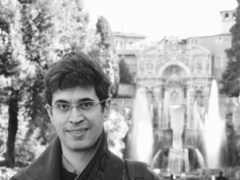
On a special configuration of $12$ conics and a related $K3$ surface
A generalized Kummer surface $X$ obtained as the quotient of an abelian surface by a symplectic automorphism of order 3 contains a $9{\mathbf A}_{2}$-configuration of $(-2)$-curves (ie smooth rational curves). Such a configuration plays the role of the $16$ disjoint $(-2)$-curves for the usual Kummer surfaces.
In this talk we will explain how construct $9$ other such $9{\mathbf A}_{2}$-configurations on the generalized Kummer surface associated to the double cover of the plane branched over the sextic dual curve of a cubic curve.
The new $9{\mathbf A}_{2}$-configurations are obtained by taking the pullback of a certain configuration of $12$ conics which are in special position with respect to the branch curve, plus some singular quartic curves. We will then explain how construct some automorphisms of the K3 surface sending one configuration to another.
(Joint work with David Kohel and Alessandra Sarti).
Projecto FCT UIDB/04459/2020.

Probabilistic aspects of toric Kahler geometry
Let $(M, \omega, L)$ be a polarized toric Kahler manifold with polytope $P$. Associated to this data is a family $\mu_k^x$ of probability measures on $P$ parametrized by $x \in P.$ They generalize the multi-nomial measures on the simplex, where $M = \mathbb{CP}^n$ and $\omega$ is the Fubini-Study measure. As is well-known, these measures satisfy a law of large numbers, a central limit theorem, a large deviations principle and entropy asymptotics. The measure of maximal entropy in this family corresponds to the center of mass $x$ of $P$. All of these results generalize to any toric Kahler manifold, except the center of mass result, which holds for Fano toric Kahler-Einstein manifolds.
Joint work with Peng Zhou and Pierre Flurin.
Projecto FCT UIDB/04459/2020.

Partial orders on contactomorphism groups and their Lie algebras
Eliashberg, Kim and Polterovich constructed nontrivial partial orders on contactomorphism groups of certain contact manifolds. After recalling their results, the subject of this talk will be the remnants of these partial orders on the orbits of the coadjoint action on their Lie algebras.
Projecto FCT UIDB/04459/2020.
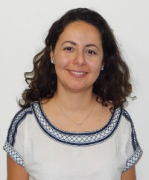
Quasi-parabolic Higgs bundles and null hyperpolygon spaces
Hyperpolygons spaces are a family of hyperkähler manifolds, that can be obtained from coadjoint orbits by hyperkähler reduction. Jointly with L. Godinho, we showed that these space are isomorphic to certain families of parabolic Higgs bundles, when a suitable condition between the parabolic weights and the spectra of the coadjoint orbits is satisfied.
In analogy to this construction, we introduce two moduli spaces: the moduli spaces of quasi-parabolic $\operatorname{SL}(2,\mathbb{C})$-Higgs bundles over $\mathbb{CP}^1$ on one hand and the null hyperpolygon spaces on the other, and establish an isomorphism between them.
Finally we describe the fixed loci of natural involutions defined on these spaces and relate them to the moduli space of null hyperpolygons in the Minkowski $3$-space.
This is based in joint works with Leonor Godinho.
Projecto FCT UIDB/04459/2020.

Gauge theory for string algebroids
In this talk I will overview recent joint work with Roberto Rubio and Carl Tipler in arXiv:2004.11399. We introduce a moment map picture for string algebroids, a special class of holomorphic Courant algebroids introduced in arXiv:1807.10329. An interesting feature of our construction is that the Hamiltonian gauge action is described by means of Morita equivalences, as suggested by higher gauge theory. The zero locus of the moment map is given by the solutions of the Calabi system, a coupled system of equations which provides a unifying framework for the classical Calabi problem and the Hull-Strominger system. Our main results are concerned with the geometry of the moduli space of solutions. Assuming a technical condition, we prove that the moduli space carries a pseudo-Kähler metric with Kähler potential given by the dilaton functional, a topological formula for the metric, and an infinitesimal Donaldson-Uhlenbeck-Yau type theorem. Finally, we relate our topological formula to a physical prediction for the gravitino mass in order to obtain a new conjectural obstruction for the Hull-Strominger system.
Projecto FCT UIDB/04459/2020.
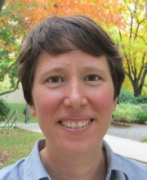
Symplectic embeddings and infinite staircases
McDuff and Schlenk determined when a four-dimensional symplectic ellipsoid can be symplectically embedded into a four-dimensional ball. They found that if the ellipsoid is close to round, the answer is given by an infinite staircase determined by Fibonacci numbers, while if the ellipsoid is sufficiently stretched, all obstructions vanish except for the volume obstruction. Infinite staircases have also been found when embedding ellipsoids into polydisks (Frenkel-Muller, Usher) and into the ellipsoid $E(2,3)$ (Cristofaro-Gardiner-Kleinman). We will describe a general approach to the question of when embedding ellipsoids into a toric target has an infinite staircase, where we provide the first obstruction to the existence of a staircase. We use this obstruction to explore infinite staircases for toric symplectic manifolds, identifying three new infinite staircases, and culminating in the conjecture that these are the only toric examples. We will describe further work-in-progress on ellipsoid embedding functions with more general targets. I will not assume any prior acquaintance with infinite staircases and will motivate the talk with plentiful examples and pictures. This talk is based on a number of collaborations with Dan Cristofaro-Gardiner, Alessia Mandini, and Ana Rita Pires; Maria Bertozzi, Emily Maw, Dusa McDuff, Grace Mwakyoma, Ana Rita Pires, Morgan Weiler; and Nicki Magill.
Projecto FCT UIDB/04459/2020.

Abel-Jacobi maps and the moduli of differentials
The moduli of $(C,f)$ where $C$ is a curve and $f$ is a rational function leads to the well-developed theory of Hurwitz spaces. The study of the moduli of $(C,\omega)$ where $C$ is a curve and $\omega$ is a meromorphic differential is a younger subject. I will discuss recent developments in the study of the moduli spaces of holomorphic/meromorphic differentials on curves. Many of the basic questions about cycle classes and integrals have now been solved (through the work of many people) — but there are also several interesting open directions.
Projecto FCT UIDB/04459/2020.

Symplectic rational $G$-surfaces and the plane Cremona group
We give characterizations of a finite group $G$ acting symplectically on a rational surface ($\mathbb{CP}^2$ blown up at two or more points). In particular, we obtain a symplectic version of the dichotomy of $G$-conic bundles versus $G$-del Pezzo surfaces for the corresponding $G$-rational surfaces, analogous to the one in algebraic geometry. The connection with the symplectic mapping class group will be mentioned.
This is a joint work with Weimin Chen and Weiwei Wu (and partly with Jun Li).
Projecto FCT UIDB/04459/2020.
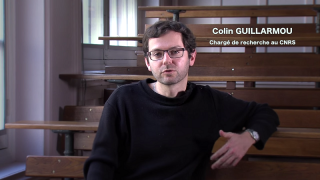
On the marked length spectrum and geodesic stretch in negative curvature
I will review a couple of recent of results proved with T. Lefeuvre and G. Knieper on the local rigidity of the marked length spectrum of negatively curved metrics.
Projecto FCT UIDB/04459/2020.

I will talk about joint work with Bernd Siebert, proposing a general mirror construction for log Calabi-Yau pairs, i.e., a pair $(X,D)$ with $D$ a “maximally degenerate” boundary divisor and $K_X+D=0$, and for maximally unipotent degenerations of Calabi–Yau manifolds. We accomplish this by constructing the coordinate ring or homogeneous coordinate ring respectively in the two cases, using certain kinds of Gromov-Witten invariants we call “punctured invariants”, developed jointly with Abramovich and Chen.
Projecto FCT UIDB/04459/2020.

Lagrangian cobordism and Chow groups
Homological mirror symmetry predicts an equivalence of categories, between the Fukaya category of one space and the derived category of another. We can “decategorify” by taking the Grothendieck group of these categories, to get an isomorphism of abelian groups. The first of these abelian groups is related, by work of Biran-Cornea, to the Lagrangian cobordism group; the second is related, via the Chern character, to the Chow group. I will define the Lagrangian cobordism and Chow groups (which is much easier than defining the categories). Then I will describe joint work with Ivan Smith in which we try to compare them directly, and find some interesting analogies.
Projecto FCT UIDB/04459/2020.

Kähler-Einstein metrics, Archimedean Zeta functions and phase transitions
While the existence of a unique Kähler-Einstein metrics on a canonically polarized manifold $X$ was established already in the seventies there are very few explicit formulas available (even in the case of complex curves!). In this talk I will give a non-technical introduction to a probabilistic approach to Kähler-Einstein metrics, which, in particular, yields canonical approximations of the Kähler-Einstein metric on $X$. The approximating metrics in question are expressed as explicit period integrals and the conjectural extension to the case of a Fano variety leads to some intriguing connections with Zeta functions and the theory of phase transitions in statistical mechanics.
Projecto FCT UIDB/04459/2020.
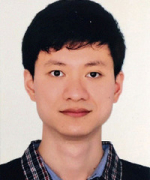
Weak SYZ conjecture for hypersurfaces in the Fermat family
The SYZ conjecture predicts that for polarised Calabi-Yau manifolds undergoing the large complex structure limit, there should be a special Lagrangian torus fibration. A weak version asks if this fibration can be found in the generic region. I will discuss my recent work proving this weak SYZ conjecture for the degenerating hypersurfaces in the Fermat family. Although these examples are quite special, this is the first construction of generic SYZ fibrations that works uniformly in all complex dimensions.
Projecto FCT UIDB/04459/2020.

This talk is aimed at reviewing what is known about $G_2$-monopoles and motivate their study. After this, I will mention some recent results obtained in collaboration with Ákos Nagy and Daniel Fadel which investigate the asymptotic behavior of $G_2$-monopoles. Time permitting, I will mention a few possible future directions regarding the use of monopoles in $G_2$-geometry.
Projecto FCT UIDB/04459/2020.

Localizing the Donaldson-Futaki invariant
We will see how to represent the Donaldson-Futaki invariant as an intersection of equivariant closed forms. We will use it to express this invariant as the intersection on some specific subvarieties of the central fibre of the test configuration. As an application we provide a proof that for Kähler orbifolds the Donaldson-Futaki invariant is the Futaki invariant of the central fiber.
Projecto FCT UIDB/04459/2020.

On the space of Kähler metrics
Inspired by the celebrated $C^0, C^2$ and $C^3$ a priori estimate of Calabi, Yau and others on Kähler Einstein metrics, we will present an expository report of a priori estimates on the constant scalar curvature Kähler metrics. With this estimate, we prove the Donaldson conjecture on geodesic stability and the properness conjecture on Mabuchi energy functional.
This is a joint work with Cheng JingRui.
Projecto FCT UIDB/04459/2020.
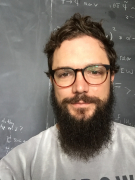
SYZ mirror symmetry for del Pezzo surfaces and rational elliptic surfaces
I will discuss some aspects of SYZ mirror symmetry for pairs $(X,D)$ where $X$ is a del Pezzo surface or a rational elliptic surface and $D$ is an anti-canonical divisor. In particular I will explain the existence of special Lagrangian fibrations, mirror symmetry for (suitably interpreted) Hodge numbers and, if time permits, I will describe a proof of SYZ mirror symmetry conjecture for del Pezzo surfaces.
This is joint work with Adam Jacob and Yu-Shen Lin.
Projecto FCT UIDB/04459/2020.

On symplectic inner and outer radii of some convex domains
Symplectic embedding problems are at the heart of the study of symplectic topology. In this talk we discuss how to use integrable systems to compute the symplectic inner and outer radii of certain convex domains.
The talk is based on a joint work with Vinicius Ramos.
Projecto FCT UIDB/04459/2020.
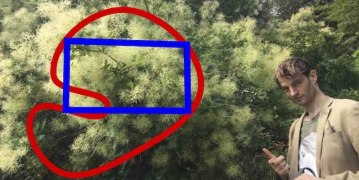
For any smooth Jordan curve and rectangle in the plane, we show that there exist four points on the Jordan curve forming the vertices of a rectangle similar to the given one.
Joint work with Josh Greene.
Projecto FCT UIDB/04459/2020.
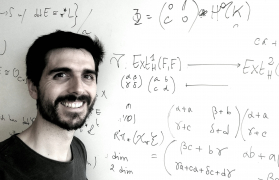
Torsion line bundles and branes on the Hitchin system
The locus of the Higgs moduli space fixed under tensorization by a torsion line bundle a key role in the work of Hausel and Thaddeus on topological mirror symmetry. We shall describe the behavior under mirror symmetry of this fixed locus.
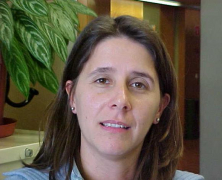
It was observed by J. Kędra that there are many symplectic $4$-manifolds $(M, \omega)$, where $M$ is neither rational nor ruled, that admit no circle action and $\pi_1 (\operatorname{Ham}( M))$ is nontrivial. In the case $M={\mathbb C\mathbb P}^2\#\,k\overline{\mathbb C\mathbb P}\,\!^2$, with $k \leq 4$, it follows from the work of several authors that the full rational homotopy of $\operatorname{Symp}(M,\omega)$, and in particular their fundamental group, is generated by circle actions on the manifold. In this talk we study loops in the fundamental group of $\operatorname{Symp}_h({\mathbb C\mathbb P}^2\#\,5\overline{\mathbb C\mathbb P}\,\!^2) $ of symplectomorphisms that act trivially on homology, and show that, for some particular symplectic forms, there are loops which cannot be realized by circle actions. Our work depends on Delzant classification of toric symplectic manifolds and Karshon’s classification of Hamiltonian circle actions.
This talk is based in joint work with Miguel Barata, Martin Pinsonnault and Ana Alexandra Reis.
Projecto FCT UIDB/04459/2020.

Dynamical implications of convexity beyond dynamical convexity
We will show sharp dynamical implications of convexity on symmetric spheres that do not follow from dynamical convexity. It allows us to furnish new examples of dynamically convex contact forms that are not equivalent to convex ones via contactomorphisms that preserve the symmetry. Moreover, these examples are $C^1$-stable in the sense that they are actually not equivalent to convex ones via contactomorphisms that are $C^1$-close to those preserving the symmetry. Other applications are the multiplicity of symmetric non-hyperbolic closed Reeb orbits under suitable pinching conditions and the existence of symmetric elliptic periodic Reeb orbits.
This is ongoing joint work with Miguel Abreu.
Projecto FCT UIDB/04459/2020.

Co-associative fibrations of $G_{2}$-manifolds and deformations of singular sets
The first part of the talk will review background material on the differential geometry of $7$-dimensional manifolds with the exceptional holonomy group $G_{2}$. There are now many thousands of examples of deformation classes of such manifolds and there are good reasons for thinking that many of these have fibrations with general fibre diffeomorphic to a $K3$ surface and some singular fibres: higher dimensional analogues of Lefschetz fibrations in algebraic geometry. In the second part of the talk we will discuss some questions which arise in the analysis of these fibrations and their "adiabatic limits". The key difficulties involve the singular fibres. This brings up a PDE problem, analogous to a free boundary problem, and similar problems have arisen in a number of areas of differential geometry over the past few years, such as in Taubes' work on gauge theory. We will outline some techniques for handling these questions.
Projecto FCT UIDB/04459/2020.